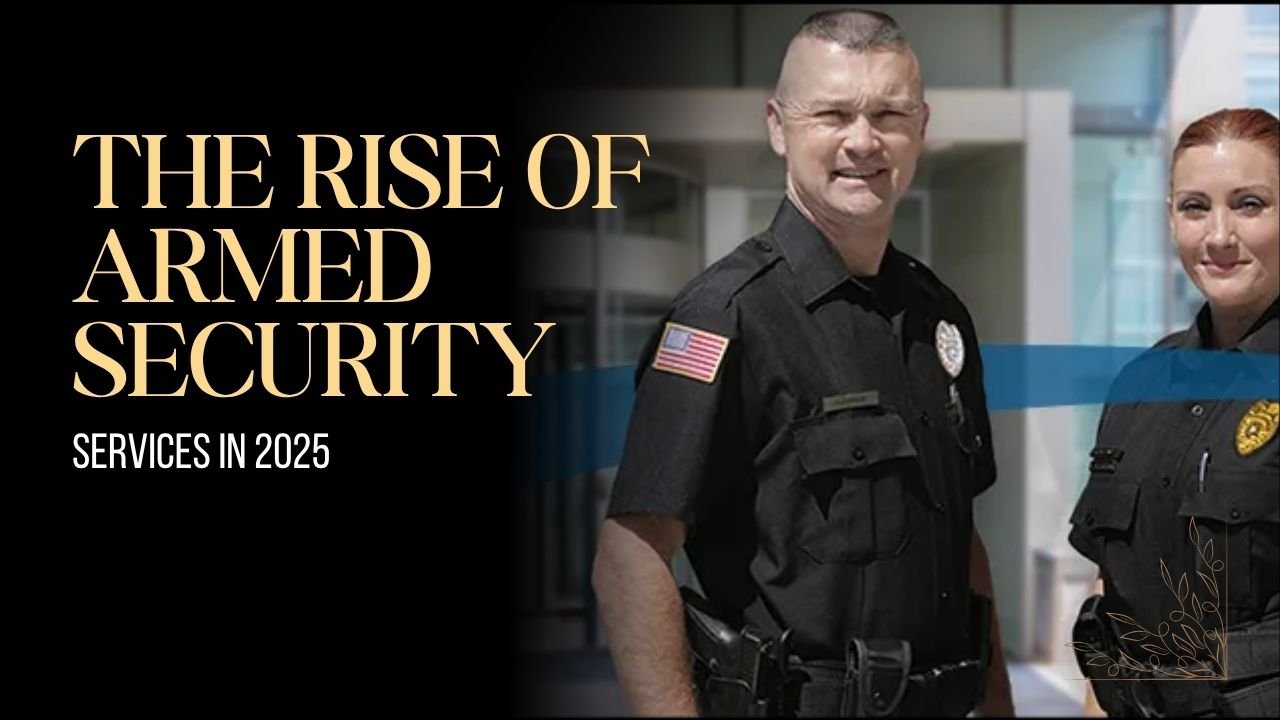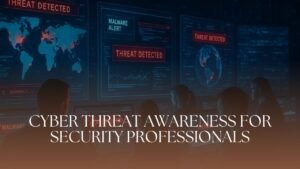In 2025, demand for armed security services is accelerating across retail, logistics, airports, critical infrastructure, corporate campuses, and high-risk venues.
Three forces are converging: a measurable rise in retail theft and on-premise violence, new employer duties to prevent workplace violence, and a broader corporate push for layered physical security supported by AI video analytics and incident reporting tech.
Together, they’re reshaping budgets, staffing, and training standards for guard providers and in-house teams.
Market Snapshot- How Big Is Armed Security Right Now?
- The broader security services market totals about $100+ billion in 2025, with guard services the dominant service type and aviation a leading end-use vertical.
- Airport security alone is projected to grow from about $17 billion in 2024 to about $19 billion in 2025 (≈11.5% CAGR), reflecting sustained investment in checkpoint staffing, perimeter patrols, and integrated screening.
- Investor interest is also rising: private-equity investment in private security expanded by roughly 30% between 2023–2025, particularly targeting firms that fuse manned guarding with AI-enabled surveillance and access control.
Bottom line: the “people + technology” model is winning in 2025, and armed guard capabilities are increasingly embedded in that mix for higher-threat sites.
The Demand Shock- Theft, Violence, and Public-Facing Risk
- Retail theft and violence are key demand drivers. U.S. retailers reported around a 90% rise in average shoplifting incidents in 2023 vs. 2019, alongside much higher loss values—pushing chains to add armed posts at targeted locations and hours.
- The U.K. shows a similar pattern: over 20 million theft incidents in the year to August 31, 2024, £2.2 billion in losses, and rising assaults—prompting retailers to spend about £1.8 billion on prevention (up from around £1.2 billion prior year), including security officers and body-worn cameras.
- North American incident severity is rising too; industry analyses flag a 27% year-on-year increase in violent events tied to retail theft, pushing organizations to reassess unarmed coverage at vulnerable sites and hours.
Regulation- The New Employer Duty to Prevent Workplace Violence
- In large economies like California, employers must implement Workplace Violence Prevention Plans (WVPP)—with hazard assessments, incident logs, and corrective actions—which has nudged many facilities to staff trained, sometimes armed, posts during high-risk operations such as late-night retail, emergency departments, cash handling, and employee terminations.
- California’s rule, effective from July 1, 2024, continues to evolve through 2025 and beyond, keeping pressure on employers to demonstrate reasonable security controls. For high-risk sites, that often means adding or upgrading guard coverage.
Talent & Labor- Hiring Qualified Armed Guards
- The U.S. will average about 162,300 openings per year for security guards and surveillance officers this decade—driven mainly by replacement needs, not rapid net job growth—which complicates hiring for armed-qualified candidates.
- Occupational data through 2025 indicates slower-than-average growth, so employers are competing harder for talent with firearms endorsements, crisis intervention skills, and de-escalation training.
2025 Playbook- Where Armed Security Fits Best
- Big-box & urban flagship retail: high-value, repeat-target locations with documented assaults and organized retail crime (ORC) patterns.
- Logistics & distribution hubs: after-hours operations, cash/merchandise concentration, and remote perimeters.
- Healthcare & emergency departments: volatile encounters, protective escorts, controlled substances.
- Airports & transportation hubs: federal/airport rules, crowd management, and critical infrastructure risk.
- Corporate campuses & terminations: episodic surge staffing for workplace violence risk and executive protection.
These deployments typically combine armed officers with analytics-enabled CCTV, access control, and body-worn cameras, moving from reactive guarding to proactive risk-based coverage.
Technology- The Force Multiplier for 2025
Guard firms and in-house programs are deploying:
- AI video analytics to detect weapons, loitering, and perimeter breaches in real-time.
- Body-worn cameras for evidence and de-escalation.
- Cloud incident management to document threats for WVPP compliance and insurance.
- Integrated dispatch & lone-worker safety for patrol teams.
These “human-plus-tech” stacks help justify the higher cost of armed coverage by delivering measurable reductions in loss, assaults, and liability.
Costs, Insurance, and Training- What’s Different for Armed
- Insurance premiums and contractual indemnities are higher for armed posts, so providers lean hard on policy, supervision, and training to control risk.
- Typical armed qualifications include enhanced background checks, firearms proficiency, ongoing re-qualification, use-of-force and de-escalation coursework, and scenario training for active assailant and robbery situations.
- Employers in regulated states tie guard post-orders to WVPP hazard assessments—documenting why an armed post is reasonable (e.g., history of weapon threats, cash exposure, isolated locations).
Quick-Read 2025 Data
| Area | 2025 Data Point | Why It Matters |
|---|---|---|
| Global security services market | ~$100 B+ | Indicates broad demand; guard services remain the largest slice. |
| Airport security market | ~$19 B (2025) | Aviation remains a growth engine for armed and specialized posts. |
| Retail theft (U.S.) | +90% incidents vs. 2019 | Retailers expand staffed security (select armed posts) to reduce violence and loss. |
| Retail crime prevention spend (U.K.) | ~£1.8 B | Spend up sharply as theft tops 20 million incidents; more guards, more body-cams. |
| Guard job openings (U.S.) | ~162,300/year | Hiring challenges for armed-qualified officers; wage and training premiums rise. |
| Workplace violence regulation (CA) | WVPP mandatory | Employers formalize risk controls; armed posts justified at high-risk sites. |
| Technology adoption | AI + body-cams mainstream | Human-plus-tech model strengthens ROI of armed coverage. |
How Organizations Are Implementing Armed Security in 2025
- Risk-scored post design: Start with hazard assessments to decide when an armed post is appropriate (time-of-day, known offenders, asset concentration).
- Tiered response: Use unarmed officers for general deterrence and armed specialists for cash handling, high-risk entrances, or violent-incident hot spots.
- Policy-led use of force: Clear de-escalation-first doctrine with consistent supervision and after-action reviews.
- Technology pairing: Mandate body-cams, panic alerts, and AI-assisted monitoring feeding a central security operations centre (GSOC).
- Transparent reporting: Incident logs aligned to WVPP requirements and insurer expectations; metrics that track assaults prevented, loss reduction, and response time improvements.
Procurement Tips for 2025 Buyers
- Ask for proof of firearms training & re-qualification cadence, not just certifications.
- Check supervision ratios (sergeants/lieutenants per shift) and incident-review procedures.
- Demand tech integration (camera analytics, access, incident software) to multiply coverage.
- Align contracts with WVPP hazards and insurer language (scope, indemnity, incident evidence handling).
- Pilot before scaling: run a 60-90-day armed coverage pilot at the highest-risk site and benchmark outcomes against unarmed coverage.
The rise of armed security services in 2025 is real and measurable. Retailers and critical-infrastructure operators face higher incident volumes; airports and logistics hubs are scaling; and new workplace-violence rules are forcing organizations to document and mitigate risk.
In this climate, armed officers—paired with AI-enabled detection, body-worn cameras, and strong policy & training—deliver the deterrence and rapid response modern sites require.
For leaders building programs this year, the winning formula is clear: risk-based armed coverage, tech-assisted oversight, and rigorous governance that proves both safety and value.
FAQs
When is an armed guard preferable to an unarmed officer?
When risk assessments point to credible threats of weapon violence, repeated violent incidents, large cash/asset exposure, or isolated/night operations where police response times are longer. These conditions justify armed coverage under workplace-violence prevention frameworks and insurer expectations.
Are there enough qualified armed officers to meet 2025 demand?
Hiring is tight: the U.S. averages about 162,300 guard openings per year (mostly replacement), so providers compete for candidates with clean backgrounds, firearms qualifications, and de-escalation skills—often paying premiums to attract and retain them.
What technology best improves outcomes for armed security deployments?
AI video analytics (weapon/behavior detection), body-worn cameras, panic alerts, and cloud-based incident management tied to a central security operations centre (GSOC). These tools create faster detection, better evidence, and stronger compliance—key to demonstrating ROI and reducing liability.




